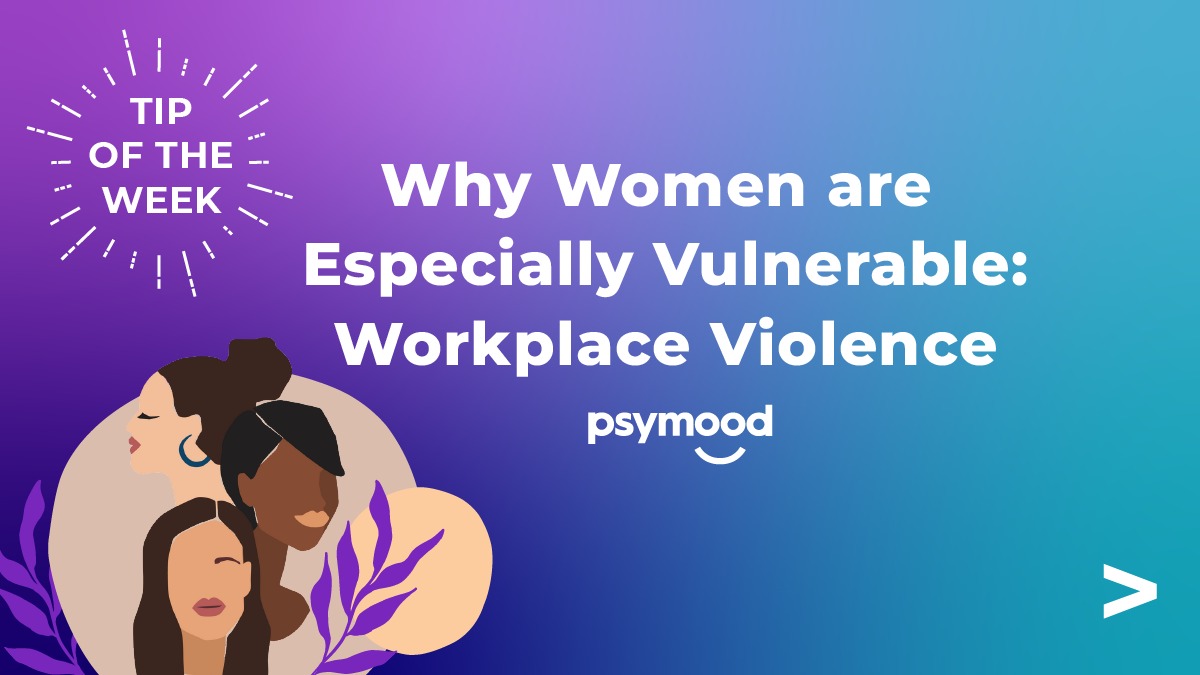During PsyMood’s recent webinar about “How Women are Especially Vulnerable”, there was a question that we didn’t get to answer during the live broadcast which was, “how to help immigrant women victims of violence here in Toronto?” Thank you for this question and for inspiring our topic for this week. To view PsyMood’s Sessions 12th Webinar, “How Women are Especially Vulnerable”, visit our YouTube Channel.
Most people think of violence and harassment as physical assault. However, in the workplace, violence and harassment can be a much more extensive issue. This type of violence can be defined as an act of a person being abused, threatened, intimidated, or assaulted at one’s place of employment. Workplace violence happens more often than people realize.
Generally speaking, workplace violence includes;
-
- Threatening Behaviours: (E.g., shaking fists, destroying property, or throwing objects).
- Verbal or written Threats: (E.g. Any intent to inflict harm).
- Verbal Abuse: (E.g., Swearing, insults, or condescending language).
- Physical Attacks: (E.g., Hitting, shoving, pushing, kicking, etc).
- Emotional Abuse: (E.g., putting down, name-calling, playing mind games, making people feel bad about themselves).
- Sexual Assault: (E.g., unwanted touching, inappropriate comments, misogyny).
- Bullying or Cyberbullying: (E.g., Spreading rumours, gossip, excluding someone socially, giving incorrect information, pranks, sending hurtful messages via text/email).
How Workplace Violence and Harassment Affects Individuals
Work can be very stressful, adding violence and harassment to a workplace can dramatically elevate stress levels and make it a hostile environment. People who experience workplace violence and harassment often develop feelings of stress, depression, anxiety, sleep difficulties, loss of appetite, aggression, shock, lack of confidence, embarrassment, and helplessness.
How Women as Especially Vulnerable
Overall, 19% of women and 13% of men reported that they had experienced harassment in their workplace in the past year. Women are even more vulnerable to workplace violence and gender-based violence (GBV). GBV is violence that is inflicted on someone based on their gender. Women are more likely to experience sexual harassment and assault. These can be described as unwanted sexual attention, coercion, hostility, and misogyny. In 2016, about 4% of Canadian women reported being sexually harassed in the workplace.
Immigrant women are even more vulnerable to this type of violence and are more likely to work jobs that put them at risk of workplace violence and harassment. Immigrant women are also more likely to experience workplace violence and harassment. In fact, women from developing countries have the highest risk of experiencing violence than any other group.
Getting Help- 5 Helpful Tips
There are many things individuals experiencing workplace violence and harassment can do to address the issue. Here are 5 ways to get help if you our someone you know is experiencing workplace violence.
- Try resolving the issue with the person by sitting down one-on-one and having a discussion. You can tell the individual that you are not comfortable with the treatment you have been receiving. If things start to get out of control or become hostile, end the conversation.
- Review the company policy. Every business has anti-bullying and anti-harassment policies and guidelines. Check it out, read it over, and see whether it explains how to report bullying.
- Document conversations. Documentation is crucial, particularly when it comes to workplace violence. It is important that you keep track of events because they will serve as your evidence.
- Talk to someone in charge. If you tried everything to address the violence and harassment and it is still persisting, it is time to take it to the management team. If it is your boss that is harassing you, talk to their boss, everyone has a boss. And if there is no boss to take it to, go to human resources.
- If the problem still persists even after talking to HR, contact the Equal Employment Opportunity Commission, the Canadian Centre for Occupational Health and Safety, or the Ministry of Labour Health & Safety Contact Centre.
For more information about what is considered workplace violence, harassment, or bullying, check out;
PsyMood is a digital tool designed to help you find the support you need in the language that you are most comfortable with. PsyMood considers cultural background, geographical location, interests, and personal needs, amongst other factors, to pair you with service providers for either online or in-person therapy sessions.
Check out our other blogs here!


.png)
.png)
.png)
Recent Comments